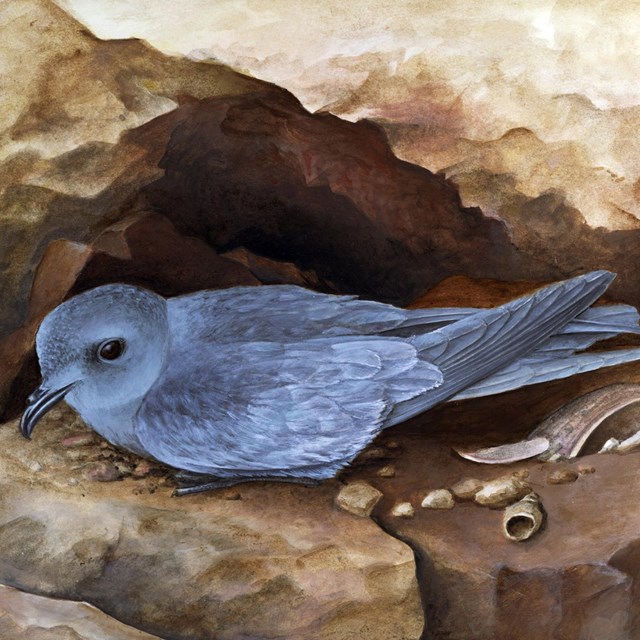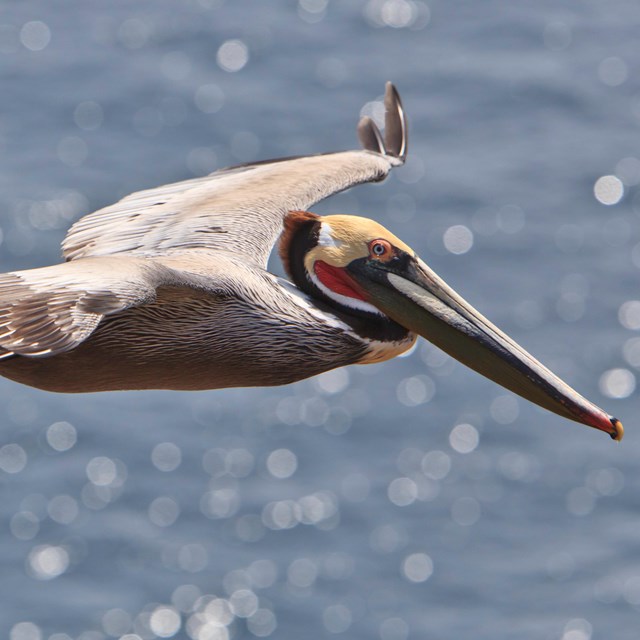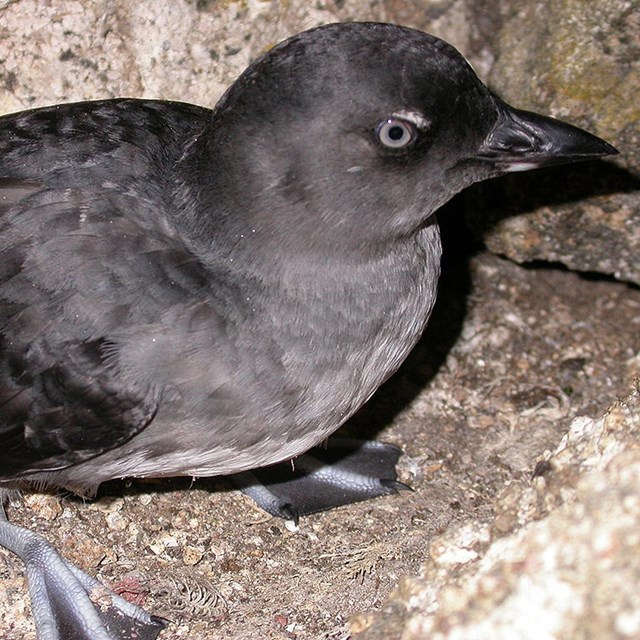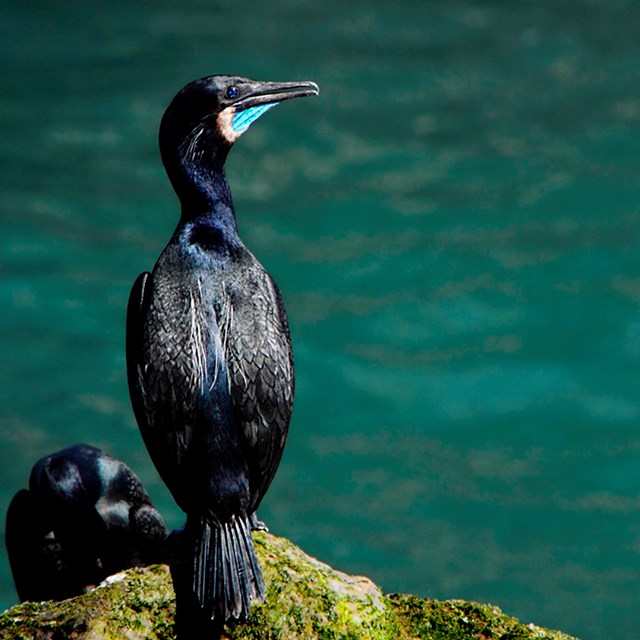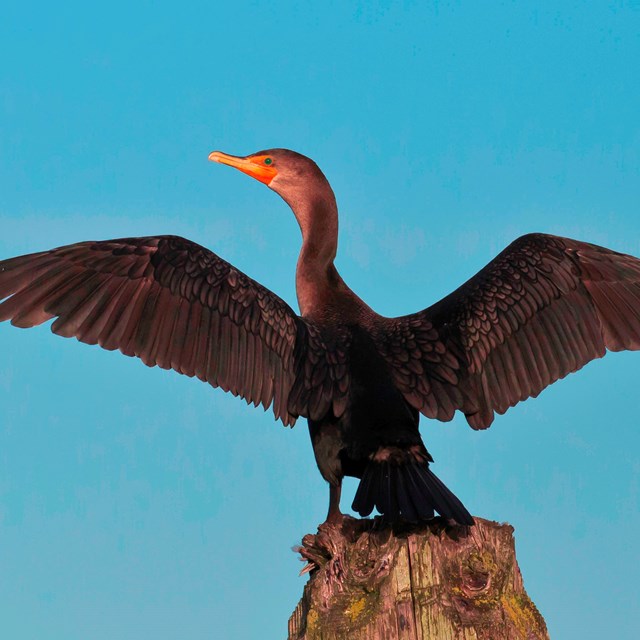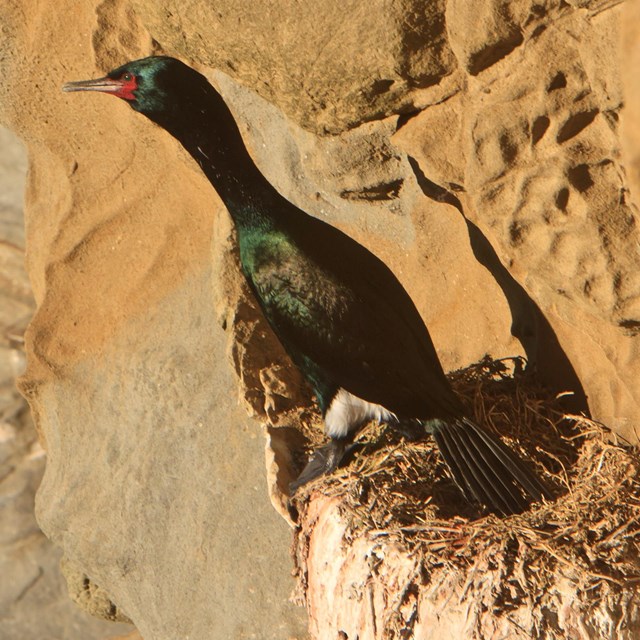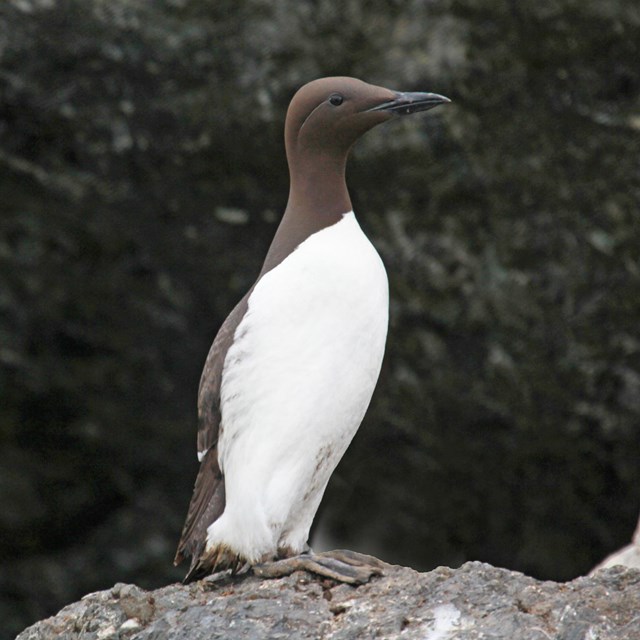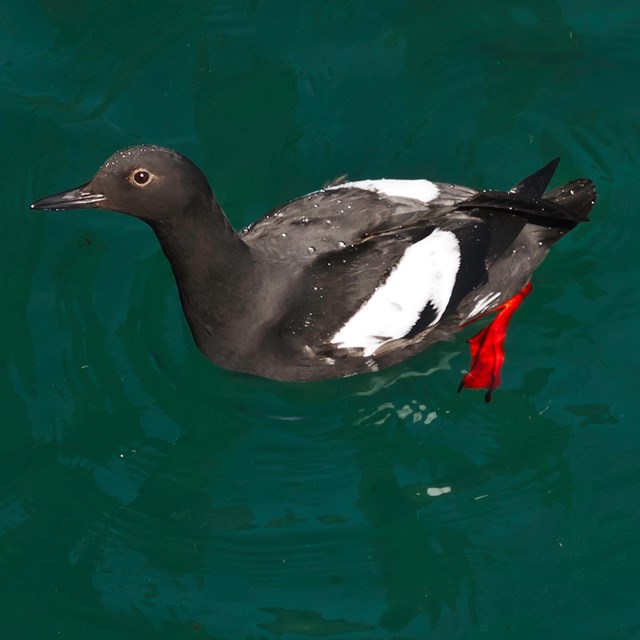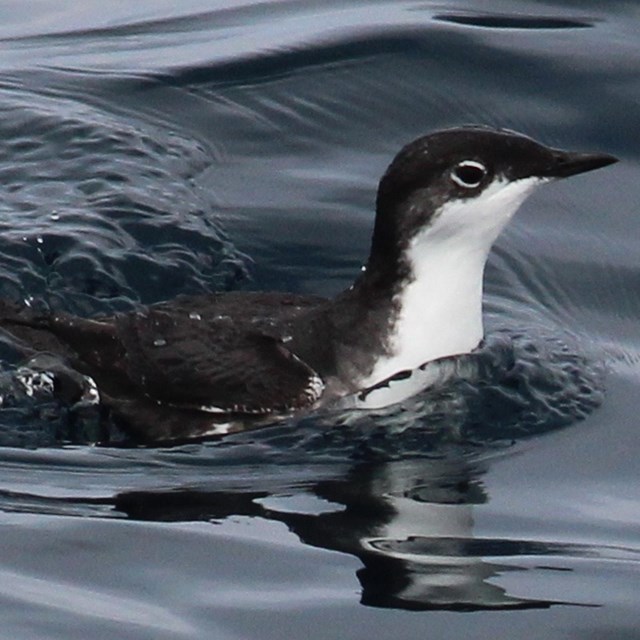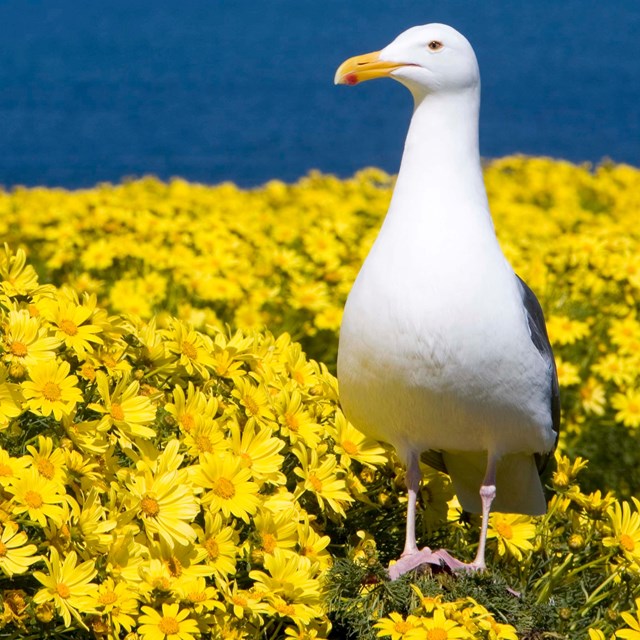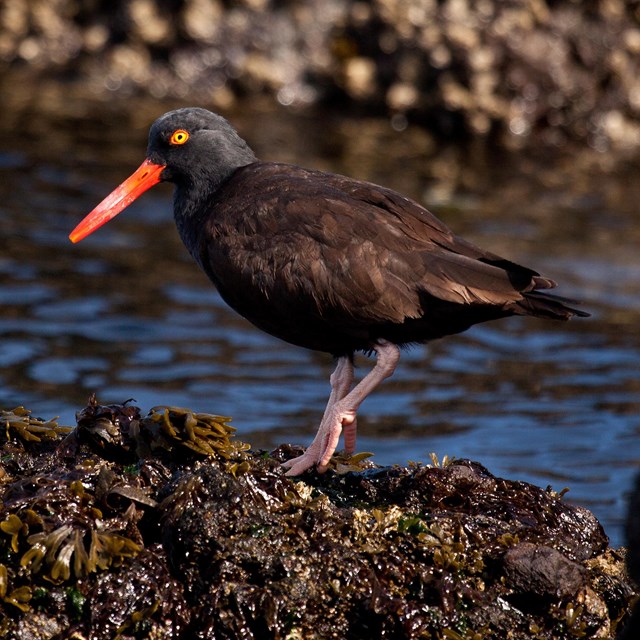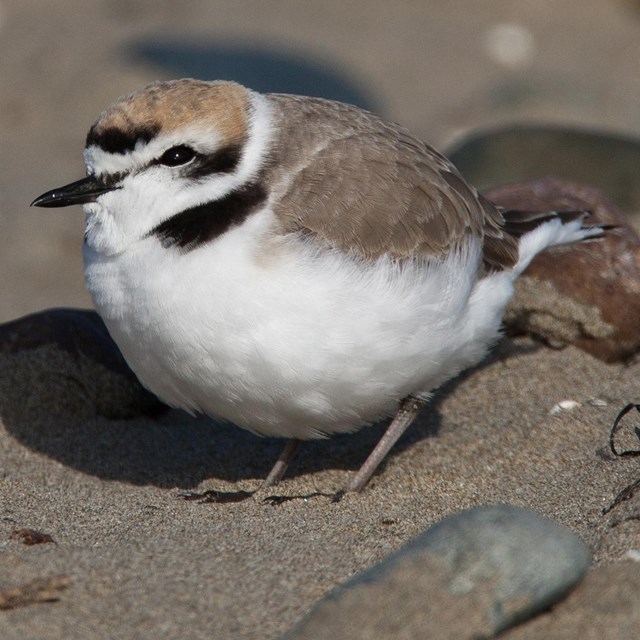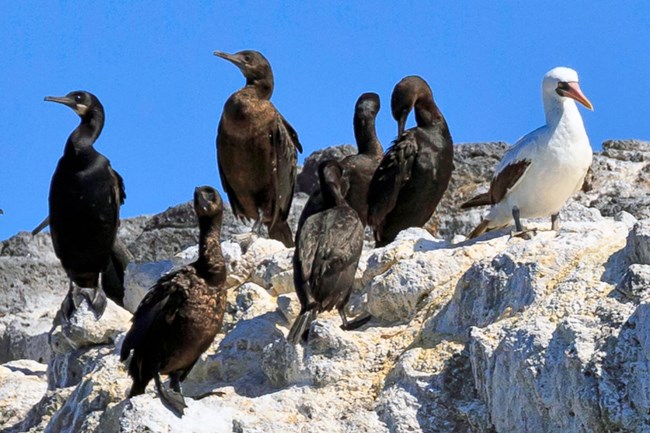
The Channel Islands are vital habitat for seabirds and shorebirds, providing essential nesting and feeding grounds for 99% of seabirds in southern California and important wintering areas and stopover points for shorebirds. Thirty shorebird species have recorded, including snowy plovers, willets, wandering tattlers, whimbrels, black turnstones, and sanderlings. Twelve species of seabirds depend on the rich marine resources and the isolation of these offshore islands to provide food and undisturbed nesting grounds safe from predators. The islands host half of the world's population of ashy storm-petrels and western gulls and 80% of the U.S. breeding population of Scripps's murrelets. In addition, the islands are home to the only major breeding population of California brown pelicans in the western U.S. The Channel Islands are critically important to seabirds, supporting:
Impacts to Seabirds On land, predation and habitat disturbance by invasive species have impacted seabirds. At Anacapa, introduced black rats preyed heavily on seabird eggs and chicks severely depleting populations of Scripps's murrelets. Black rats still prey on seabird populations on San Miguel. At Santa Barbara Island, seabirds were decimated by cats and habitat has been marginalized by years of over grazing by introduced livestock and rabbits. Seabird habitat has also been severely impacted by grazing of non-native animals on Santa Cruz Island. Monitoring and Restoration 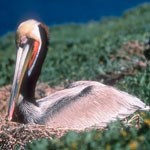
Anacapa Island: Monitoring of Anacapa's Scripps's murrelet colonies have shown that they are recovering following rat eradication in 2002. In addition, California brown pelican monitoring on Anacapa Island shows that these endangered birds, which breed only on the Channel Islands, are rebounding and have been proposed for delisting. However, ongoing studies indicate that DDT continues to persist at higher than expected levels in several species of seabirds nesting on the islands, including cormorants and petrels. 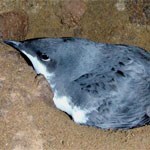
Santa Barbara Island: On Santa Barbara Island, efforts are underway to restore seabird nesting habitat for Scripps's murrelets and Cassin's Aucklets by removing non-native plants and planting native vegetation to improve seabird habitat. Nest boxes insulated against the elements have also been installed with the goal of providing a secure nesting area and vocalization playback systems have been used to attract auklets. For more information about seabird restoration visit Seabird Restoration Videos and Montrose Settlement Restoration Program. 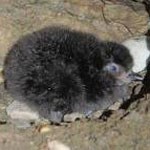
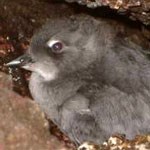
S. Thomsen Seabird Restoration Videos
Visit our keyboard shortcuts docs for details
Documents the removal of non-native species on Anacapa Island.
Visit our keyboard shortcuts docs for details
Ten years after removing nonnative rats the ecosystem on Anacapa Island, including rare seabirds, is showing profound results of recovery.
Visit our keyboard shortcuts docs for details
Visit our keyboard shortcuts docs for details
|
Last updated: June 25, 2016

